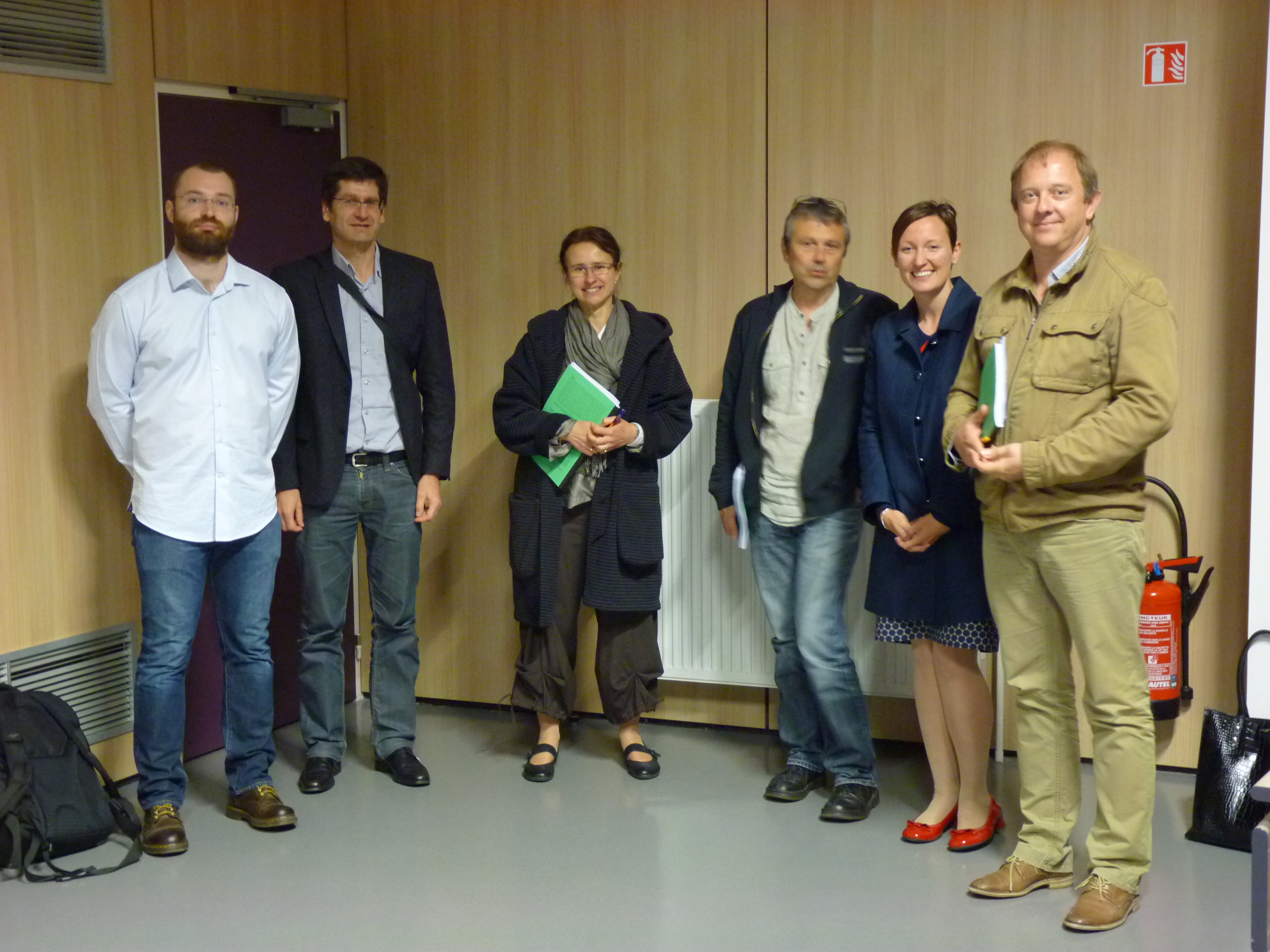The defense will be held the 28th May 2014 at 9H00 in Amphitheater 7, Faculté des Sciences, Boulevard des Aiguillettes, Vandoeuvre
Title: Bacterial-fungal interactions in wood decay: from wood physicochemical properties to taxonomic and functional diversity of Phanerochaete chrysosporium-associated bacterial communities
Abstract
Wood decomposition is an important process in forest ecosystems in terms of their carbon and nutrient cycles. In temperate forests, saprotrophic basidiomycetes such as white-rot fungi are the main wood decomposers. While they have been less studied, bacterial communities also colonise decaying wood and coexist with these fungal communities. Although the impact of bacterial-fungal interactions on niche functioning has been highlighted in a wide range of environments, little is known about their role in wood decay. Based on microcosm experiments and using a culture-independent approach, we showed that the presence of the white-rot fungus Phanerochaete chrysosporium significantly modified the structure and diversity of the bacterial communities associated with the degradation of beech wood (Fagus sylvatica). Using a culture-dependent approach, it was confirmed that in the presence of the fungus the mycosphere effect resulted in increased bacterial abundance and modified the functional diversity of the fungal-associated bacterial communities. Lastly, a polyphasic approach simultaneously analysing wood physicochemical properties and extracellular enzyme activities was developed. This approach revealed that P. chrysosporium associated with a bacterial community isolated from its mycosphere was more efficient in degrading wood compared to the fungus on its own, highlighting for the first time synergistic bacterial-fungal interactions in decaying wood.
Keywords: wood decomposition, bacterial-fungal interactions, mycosphere effect, bacterial diversity, Phanerochaete chrysosporium, Fagus sylvatica, white rot.
Résumé
Dans les écosystèmes forestiers, la décomposition du bois est un processus majeur, notamment impliqué dans le cycle du carbone et des nutriments. Les champignons basidiomycètes saprotrophes, incluant les pourritures blanches, sont les principaux agents de cette décomposition dans les forêts tempérées. Bien que peu étudiées, des communautés bactériennes sont également présentes dans le bois en décomposition et cohabitent avec ces communautés fongiques. L’impact des interactions bactéries-champignons sur le fonctionnement d’une niche écologique a été décrit dans de nombreuxenvironnements. Cependant, très peu de choses sont connues sur leur rôle dans le processus de décomposition du bois. A partir d’expériences en microcosme et en utilisantune approche non cultivable, il a été démontré que la présence du champignonPhanerochaete chrysosporiuminfluençait significativement la structureet la diversité des communautés bactériennes associées au processus de décomposition du hêtre (Fagus sylvatica). Par une approche cultivable, cet effet mycosphère aété confirmé, se traduisant par une augmentation de la concentration des communautés bactériennes en présence du champignonainsi que par une modification de la diversité fonctionnelle des communautés bactériennes associées au champignon. Enfin, une approche polyphasique a été développée,combinant l’analyse des propriétés physico-chimiques du bois et des activités enzymatiques extracellulaires. Ces derniers résultatsont révélé que l’association de P. chrysosporium avec une communauté bactérienne issue de la mycosphère de ce dernier aboutissait à une dégradation plus importante du matériau bois par rapport à la dégradation par le champignon seul, indiquant pour la première fois une interaction bactéries-champignon synergique dans le bois en décomposition.
Mots-clefs : décomposition du bois, interactions bactéries-champignons, effet mycosphère, diversité bactérienne, Phanerochaete chrysosporium, Fagus sylvatica, pourriture blanche.





